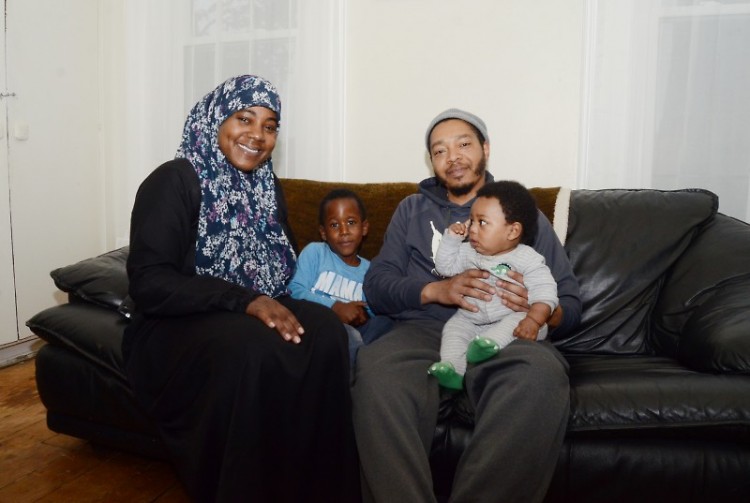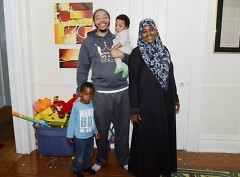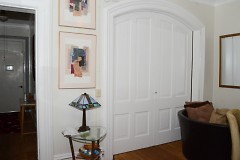Javonte Tubbs works as the Project Coordinator of Youth Development for the Grand Rapids Urban League, a nonprofit that provides a variety of services and outreach to empower African-Americans and other minorities. He bought his Pleasant Park area home five years ago, from a 90 year old woman, Miss Irene, who had raised her children there.
“Miss Irene was adamant that I buy her home, since I was the only brother who came in there. She was like a grandma to me even though we had never met.”
He estimates that the home was built around 1850, which is over 100 years before the use of lead paint was banned in 1978.
Tubbs knew that lead was an issue in homes, and it was clear from both the age of home, and the glossy style of the paint in his home, that lead was likely going to be a problem.
“I had some basic knowledge of lead. I had a couple of cousins that tested with high blood lead levels as kids, but I didn’t know the depth of damage that lead can cause. I didn’t know about the lead paint laws and how lead paint was the absolute best thing before the 70’s, it was before anyone knew the dangers of it.”
Javonte owned his home for 5 years, but didn’t have any young children living in the home, so he didn’t take any action on the potential hazards. Lead, while not ideal for an adult’s environment, affects children’s development and can create lifelong damages. The greatest risk is to children ages 0-5 and pregnant women.
Before long, Tubbs had a reason to be concerned about lead. He met his wife, Asiyah, when she was in Grand Rapids visiting from Philadelphia and she ended up staying here. When Asiyah became pregnant, she was the driving force behind taking specific action.
Javonte and Asiyah decided to complete an application for Get The Lead Out, a no-cost program which helps qualifying homeowners get needed repairs done to remove lead hazards. Javonte had a co-worker who went through the program successfully, and they started the application process, which Asiyah described.
“For the application process, we needed to provide social security numbers, income, bank statements, blood lead testing for the kids, but not the baby. We thought it was going to be based on credit, but it wasn’t. It was about a month process before we got approved by a letter in the mail.”
The family had to leave home for 2 weeks, and stay in a hotel.
“If there is something you forgot, let the contractors know and they will bring it to you. You can’t come into the home because of the hazards and you need to wear a mask and all that.”
The cost was not covered by the program, but Tubbs said it was well worth it, because of the amount of work completed. The work replaced 26 windows in the home, completed roof repair, painted baseboards and walls, new wood flooring and added carpet to stairs, which was more than they expected.
“Before I had the windows wrapped up in plastic, so the kids couldn’t get to them, which was my way of keeping things safe. It’s a sense of relief that the kids are going to be safe and play; the kids can enjoy the windows now. We can enjoy the view from our windows.”
Javonte and Asiyah gave the following advice to any families who are considering applying to the program: “Have patience and do it. It’s worth it. The entire process is worth it. Find a spot to stay, which is the only hardship, living out of a suitcase, but if you look at the investment as opposed to that two weeks, it’s nothing. I’d do again in a heartbeat."
Are You Eligible for Get The Lead Out?
All eligibility requirements must be met to qualify
- Do you own a home in the Grand Rapids city limits?
- Was your home built before 1978?
- Do you have a child under 5 living in the home?
- Is your income 80% of the area median income?
The Rapidian, a program of the 501(c)3 nonprofit Community Media Center, relies on the community’s support to help cover the cost of training reporters and publishing content.
We need your help.
If each of our readers and content creators who values this community platform help support its creation and maintenance, The Rapidian can continue to educate and facilitate a conversation around issues for years to come.
Please support The Rapidian and make a contribution today.


